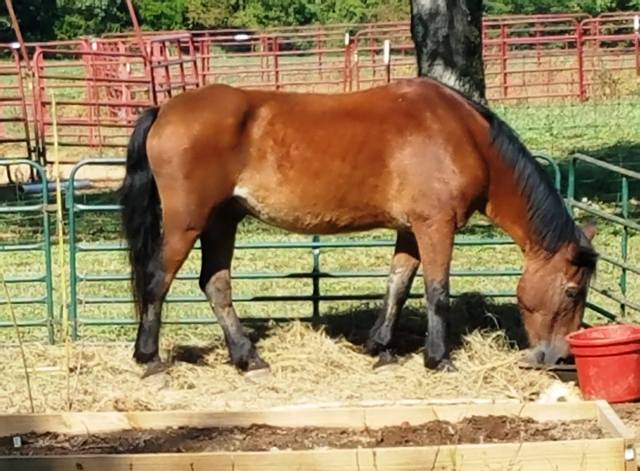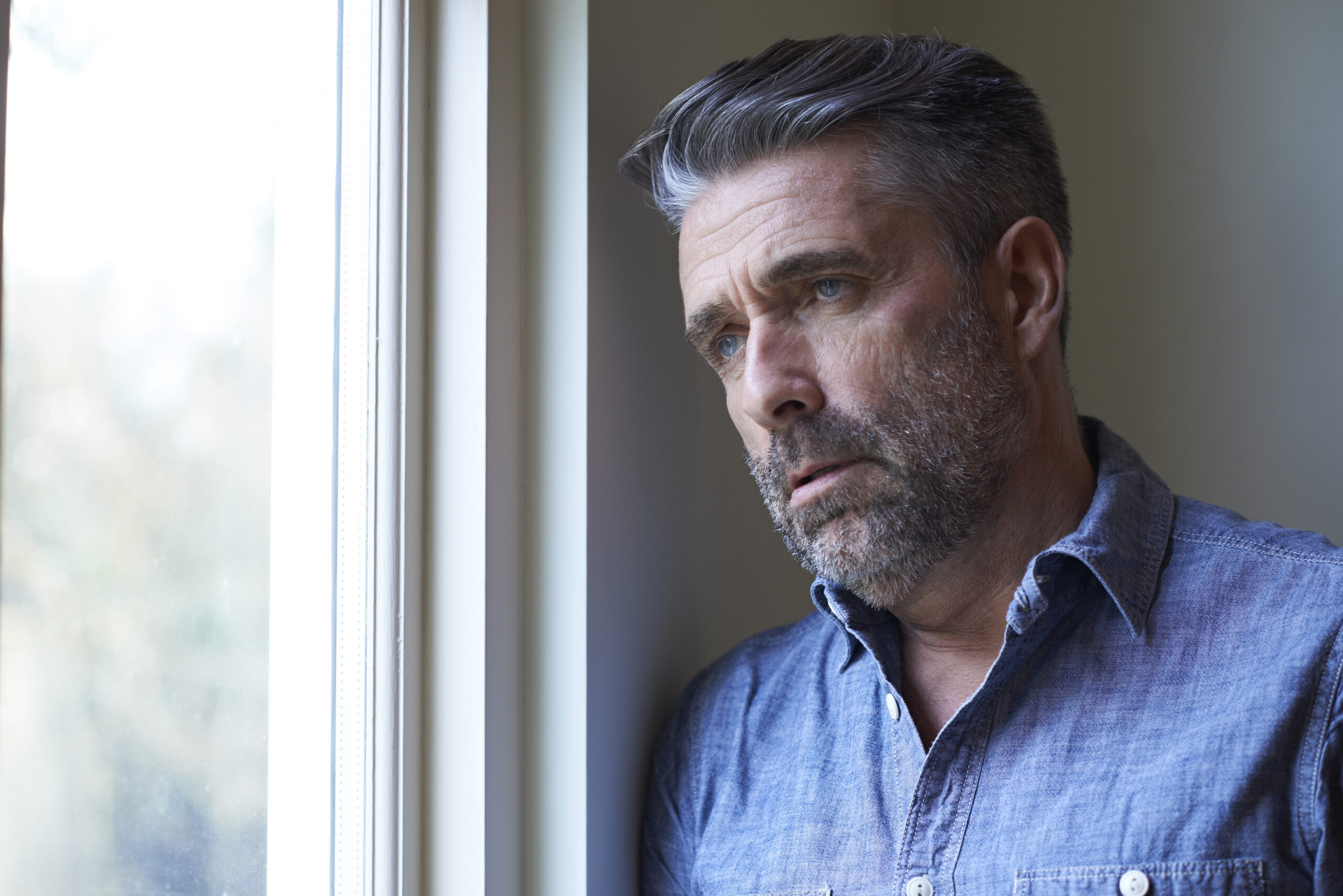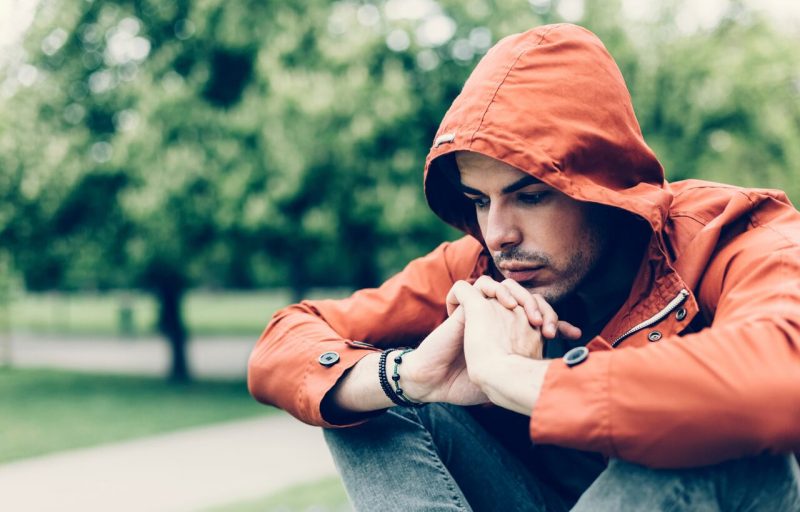
Lucky the Horse Saved from Slaughter by Bluff
Every year, thousands of U.S. horses are sent to slaughterhouses in Canada and Mexico, according to animal welfare organizations. Lucky the horse was bound for a similar fate. Set to be sold at 17 cents a pound, “Lucky seemed like he had given up on life,” said Dale Phillips, Bluff’s equine therapist. “He was just done. He had no expression whatsoever. He didn’t whine at feeding time. He just stood there.”
The feeling of having given up – or been given up on – is one that many people struggling with substance use have felt. So Phillips adopted the horse, and brought him to Bluff, thinking there might be lessons in Lucky’s life story for the men and women taking part in Bluff’s equine therapy program.
Getting Lucky’s Gallop Back
Phillips, whose personal story of overcoming trauma in childhood was covered in People magazine, has spent a lifetime working with horses. As an equine therapist at Bluff, he helps patients deal with their own trauma and heal from substance abuse by teaching them to take responsibility for caring for horses, and learning from the relationships that develop as a result.
Phillips first took Lucky home to his ranch, where he assessed Lucky to make sure he was suitable for people who had little experience working with horses. Then he brought Lucky to Bluff, where he and the patients quickly got to work nursing the horse back to health. Skinny and withdrawn when he arrived, Lucky was given plenty of fresh air, exercise, nutritious food and proper grooming. Bluff patients bathed him, exercised him, fed him twice a day, cleaned his stall and made sure he had clean bedding to sleep on.
As the weeks went on, Lucky’s personality came back. Seemingly revived, he started acting like a happy and healthy horse – watching people as they arrived, pawing at the ground, looking relaxed, and getting excited when it was mealtime.
“It’s like he was thinking, ‘Maybe I’m not done,'” Phillips said. “He started letting me know it was feeding time, and I’d better hurry up.”
As the patients bonded with Lucky, Phillips drew parallels between Lucky’s progress and their own. “What’s the difference between Lucky and you? He’s willing to let me help him,” Phillips told those struggling to embrace the recovery process.
“Horses help you open up that line of communication with people. I want them to see the effort that the horse was putting in to get better. They see in two weeks the change in him, physically and emotionally. He has expression in his eyes. You turn him out and he jumps around and bucks around, which means he’s feeling better. That’s recovery. I see what he can be, just like I see what these folks come in looking like. But I know how much better they can look and feel after a few weeks of putting in the effort.”
“Maybe everybody has given up on them too. But that horse only needs one person in his life to make a difference.”
Benefits of Equine Therapy
Helping to care for horses provides a reason to get up in the morning, and allows people to step outside of their own worries and preoccupations to care for another creature. Horses are very social and respond to interaction, building strong relationships with people once they trust them.
Horses also have a unique ability to sense emotions and react accordingly. If someone is angry, the horse may become stubborn and not want to follow commands. If the person is fearful, the horse may act skittish. But when someone is open and calm, the horse is more likely to respond in a similar manner.
By interacting with these smart, beautiful animals, men and women in recovery are challenged to look at themselves and the world in new ways. No matter how imperfect a person feels, when they treat a horse well, horses respond with non-judgmental friendship in return.
Many of the horses that Phillips uses in equine therapy have been abused or neglected. When people see horses overcome trauma and abuse, they start to envision overcoming their own difficult pasts.
“That’s why I do equine therapy,” Phillips said. “We have broken, beat up horses. We get broken, beat up people here too. When they hear about what these horses have gone through, they say, ‘I can’t believe somebody would do that to a horse.’ And I say, ‘I can’t believe somebody would do this to you.’ They can see that in an animal but they can’t see it when they look in the mirror. We are trying to heal the horses. We challenge the people to do the same work.”
Lucky Heads to His New Home
Now fully restored to health with a gleaming coat and a gentle disposition, Lucky was adopted by a family as a therapy horse for their 6-year-old son, who has spina bifida. Spina bifida, also known as neural tube defect, occurs when the spine doesn’t close properly during gestation. Babies with the condition often need surgery shortly after birth, and depending on the severity, may have serious physical and mental disabilities.
Horseback riding, when conducted with the help of equine therapists, can help children with spina bifida improve muscle tone, strength, flexibility and cognitive skills.
The patients said goodbye to Lucky in a graduation ceremony. “They gave him a reason to live,” Phillips said. “What we try to do is give our patients a reason to get their lives back too.”








